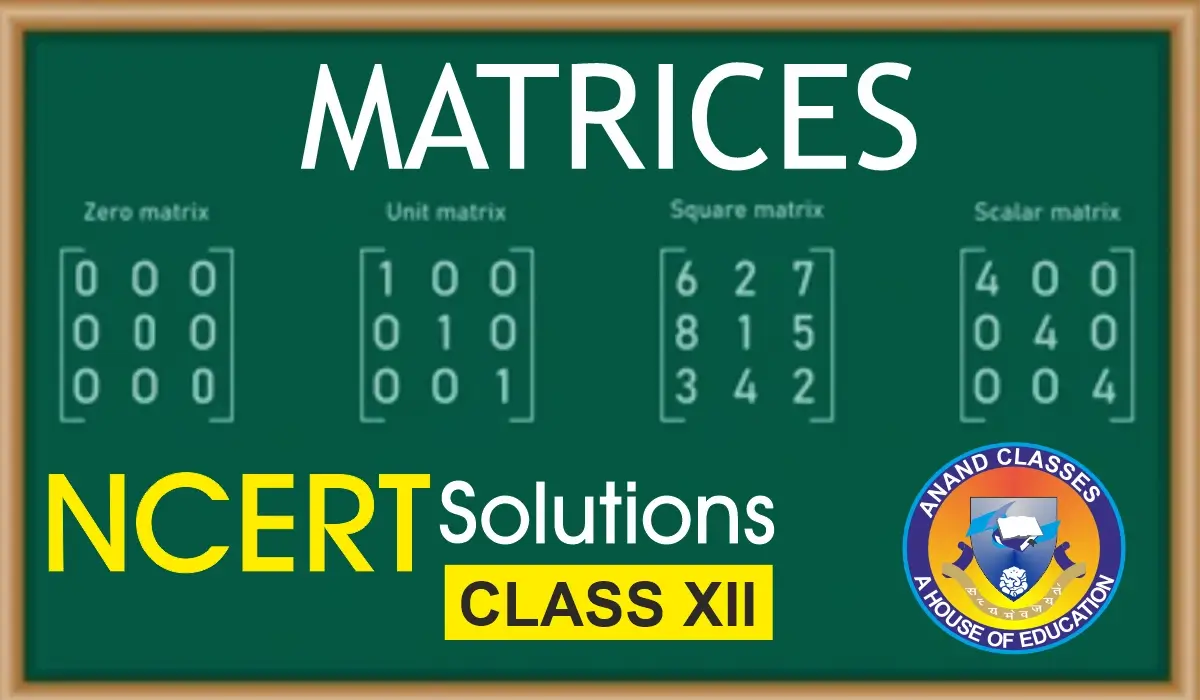Anand Classes presents detailed NCERT Class 11 Chemistry Chapter 3 solutions on Classification of Elements and Periodicity in Properties (Intext Questions 3.1 to 3.5). These solutions explain the logic behind the organization of the periodic table, Mendeleev’s approach versus the modern periodic law, the quantum number justification for 32 elements in the 6th period, and the location of superheavy elements like Z = 114. Designed in simple language with proper step-by-step explanations, this material is highly useful for CBSE board exams and competitive exams like JEE and NEET. Click the print button to download study material and notes.
NCERT Solutions Chemistry Class 11
NCERT 3.1 : What is the basic theme of organisation in the periodic table?
Answer :
The basic theme of organisation of elements in the periodic table is to simplify and systematize the study of the properties of all the elements and millions of their compounds.
On the basis of similarities in chemical properties, the various elements have now been divided into different groups. This has made the study simple because the properties of elements are now studied in the form of groups rather than individually.
NCERT 3.2 : Which important property did Mendeleev use to classify the elements in his periodic table and did he stick to that?
Answer :
Mendeleev used the atomic weight of elements as the fundamental property for classification in his periodic table. He arranged all the known elements in order of increasing atomic weights, and while doing so, he placed elements with similar chemical properties in the same vertical columns, which he called groups. This systematic arrangement allowed him to show a clear periodicity in the properties of elements.
However, Mendeleev did not always stick strictly to the order of increasing atomic weights. In some cases, he placed an element with a slightly higher atomic weight before another element with a lower atomic weight if the chemical properties demanded it. For example, he placed iodine (atomic weight 127) after tellurium (atomic weight 128), even though iodine has a lower atomic weight, because iodine’s properties matched better with fluorine, chlorine, and bromine in the halogen group. This shows that Mendeleev gave more importance to the chemical properties of elements rather than blindly following atomic weight order.
This flexibility was one of the greatest strengths of Mendeleev’s periodic table. It not only explained the properties of known elements more accurately but also helped in predicting the existence and properties of elements that had not yet been discovered.
NCERT 3.3 : What is the basic difference in approach between Mendeleev’s Periodic Law and the Modern Periodic Law?
Answer :
Mendeleev’s Periodic Law states that the physical and chemical properties of the elements are the periodic functions of their atomic weights. In simple terms, he arranged the elements in order of increasing atomic weights and observed that similar properties repeated at regular intervals. This principle helped him to classify the elements into groups and periods.
The Modern Periodic Law, however, states that the physical and chemical properties of the elements are the periodic functions of their atomic numbers. This means that elements are arranged on the basis of their atomic numbers (the number of protons in the nucleus) instead of their atomic weights. Since atomic number is the true fundamental property of an element, this law gave a more accurate arrangement of elements.
The difference becomes clear with examples. In Mendeleev’s table, argon (atomic weight 40) was placed before potassium (atomic weight 39), which seemed wrong because potassium has a lower atomic weight. But when arranged according to atomic number, argon (atomic number 18) comes before potassium (atomic number 19), which is correct. Similarly, cobalt (atomic weight 59) and nickel (atomic weight 59.9) could not be explained properly in Mendeleev’s arrangement, but in the modern table cobalt (atomic number 27) is placed before nickel (atomic number 28) without any problem.
Thus, the basic difference in approach is that Mendeleev used atomic weight as the basis of classification, while the modern periodic law uses atomic number. This shift solved the anomalies and made the arrangement of elements more scientific and accurate.
NCERT 3.4 On the basis of quantum numbers, justify that the sixth period of the periodic table should have 32 elements.
Answer.
In the modern periodic table, each period corresponds to the filling of a new principal energy level. The sixth period begins with the filling of the principal quantum number $n = 6$.
For $n = 6$, the possible values of the azimuthal quantum number $l$ are:
- $l = 0 \; (6s)$
- $l = 1 \; (6p)$
- $l = 2 \; (6d)$
- $l = 3 \; (6f)$
However, according to the Aufbau principle, the order of filling is not simple. The relative energies of these subshells are:
$$6s < 4f < 5d < 6p$$
Thus, in the sixth period, the electrons are filled in the $6s$, $4f$, $5d$, and $6p$ subshells.
Now let us count the orbitals:
- $s$-subshell has 1 orbital
- $p$-subshell has 3 orbitals
- $d$-subshell has 5 orbitals
- $f$-subshell has 7 orbitals
Therefore, the total number of orbitals is:
$$1 + 3 + 5 + 7 = 16$$
Since each orbital can accommodate a maximum of 2 electrons (Pauli’s Exclusion Principle), the total number of electrons that can be filled is:
$$16 \times 2 = 32$$
Hence, the sixth period of the periodic table should have 32 elements.
NCERT 3.5 In terms of period and group, where would you locate the element with $Z = 114$?
Ans.
The filling of the 6th period ends at $^{86}\text{Rn}$. Thereafter, the filling of the 7th period starts. Just like in the 6th period, in the 7th period also, the filling of four subshells occurs: $7s$, $5f$, $6d$, and $7p$.
According to the Aufbau principle, their relative energies increase in the order:
$$7s < 5f < 6d < 7p$$
- After $^{86}\text{Rn}$, the next two elements with $Z = 87$ and $Z = 88$ are s-block elements.
- The next fourteen elements, i.e. $Z = 90$ to $Z = 103$, are f-block elements.
- The following ten elements, i.e. $Z = 104$ to $Z = 112$, are d-block elements.
- The last six elements, i.e. $Z = 113$ to $Z = 118$, are p-block elements.
Therefore, the element with $Z = 114$ is the second p-block element (i.e., in Group 14) of the 7th period.
Thus, the location of the element with $Z = 114$ in the periodic table is:
$$\text{Period} = 7^{\text{th}}, \quad \text{Block} = p, \quad \text{Group} = 14$$
📚 Buy Study Material & Join Our Coaching
For premium study materials specially designed for JEE, NEET, NDA, and CBSE/ICSE Classes, visit our official study material portal:
👉 https://publishers.anandclasses.co.in/
For NDA Study Material, Click Here
To enroll in our offline or online coaching programs, visit our coaching center website:
👉 https://anandclasses.co.in/
📞 Call us directly at: +91-94631-38669
💬 WhatsApp Us Instantly
Need quick assistance or want to inquire about classes and materials?
📲 Click below to chat instantly on WhatsApp:
👉 Chat on WhatsApp
🎥 Watch Video Lectures
Get access to high-quality video lessons, concept explainers, and revision tips by subscribing to our official YouTube channel:
👉 Neeraj Anand Classes – YouTube Channel
For NDA Polity Notes, Click :
For SSC Real Numbers Notes, Click :


